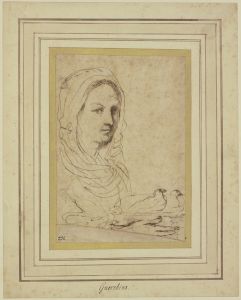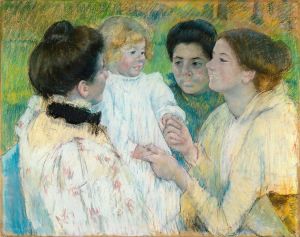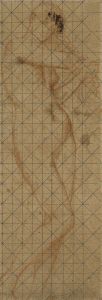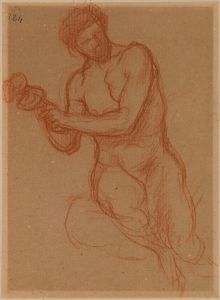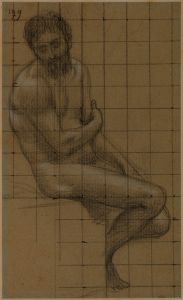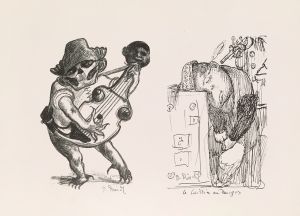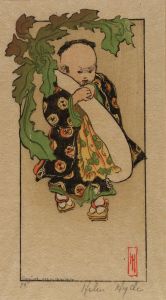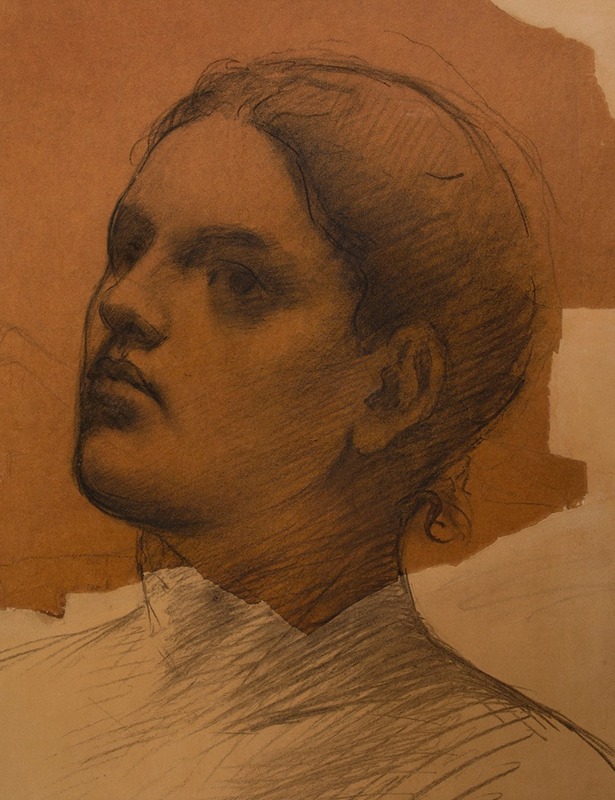
Portrait de femme de trois-quarts
A hand-painted replica of Pierre Puvis de Chavannes’s masterpiece Portrait de femme de trois-quarts, meticulously crafted by professional artists to capture the true essence of the original. Each piece is created with museum-quality canvas and rare mineral pigments, carefully painted by experienced artists with delicate brushstrokes and rich, layered colors to perfectly recreate the texture of the original artwork. Unlike machine-printed reproductions, this hand-painted version brings the painting to life, infused with the artist’s emotions and skill in every stroke. Whether for personal collection or home decoration, it instantly elevates the artistic atmosphere of any space.
Pierre Puvis de Chavannes was a notable French painter of the 19th century, renowned for his mural paintings and contributions to Symbolism. One of his works, "Portrait de femme de trois-quarts," exemplifies his unique style and approach to portraiture. This painting, whose title translates to "Portrait of a Woman in Three-Quarter View," reflects Puvis de Chavannes' interest in capturing the essence and character of his subjects through a subtle and restrained palette.
Puvis de Chavannes was born on December 14, 1824, in Lyon, France. He initially pursued a career in engineering but later turned to painting, studying under several artists, including Eugène Delacroix. His artistic journey led him to develop a distinctive style characterized by muted colors, simplified forms, and a focus on the emotional and spiritual aspects of his subjects. These elements are evident in "Portrait de femme de trois-quarts," where the artist employs a gentle color scheme and soft lines to convey the personality and mood of the woman depicted.
The painting is executed in oil on canvas, a medium that Puvis de Chavannes frequently used. The composition features a woman in a three-quarter pose, a common format in portraiture that allows for a more dynamic representation of the subject. This pose provides a sense of depth and dimension, inviting viewers to engage with the subject from multiple angles. The woman's expression is serene and contemplative, a hallmark of Puvis de Chavannes' portraits, which often emphasize introspection and inner life.
Puvis de Chavannes' work is often associated with the Symbolist movement, which sought to express ideas and emotions through symbolic imagery and themes. Although "Portrait de femme de trois-quarts" is a more straightforward representation compared to his larger allegorical murals, it still embodies the Symbolist ethos through its focus on mood and atmosphere rather than detailed realism. The painting's subdued tones and gentle brushwork create a dreamlike quality, encouraging viewers to ponder the deeper emotional resonance of the piece.
Throughout his career, Puvis de Chavannes received significant recognition for his contributions to art. He was a founding member of the Société Nationale des Beaux-Arts and exhibited widely in France and internationally. His influence extended beyond his lifetime, impacting subsequent generations of artists, including the Post-Impressionists and early modernists, who admired his ability to convey profound meaning through simplicity and restraint.
"Portrait de femme de trois-quarts" is a testament to Puvis de Chavannes' skill as a portraitist and his ability to capture the intangible qualities of his subjects. While specific details about the identity of the woman in the painting or the exact date of its creation may not be well-documented, the work remains an important example of his artistic legacy. It reflects his commitment to exploring the human condition and the subtle interplay of emotion and form.
Today, Puvis de Chavannes is remembered as a pivotal figure in 19th-century art, whose innovative approach to painting continues to inspire and resonate with audiences. His works, including "Portrait de femme de trois-quarts," are celebrated for their timeless beauty and their ability to transcend the boundaries of traditional portraiture, offering viewers a glimpse into the soul of the subject and the artist alike.







